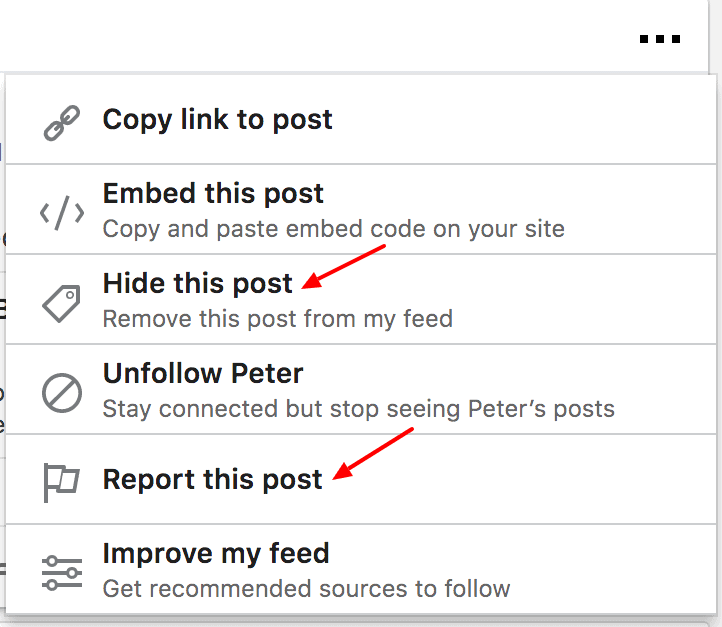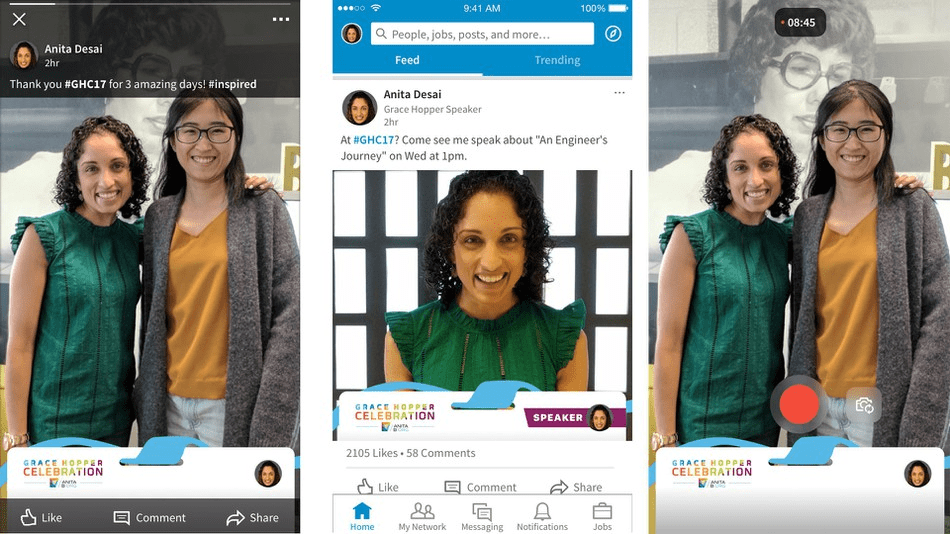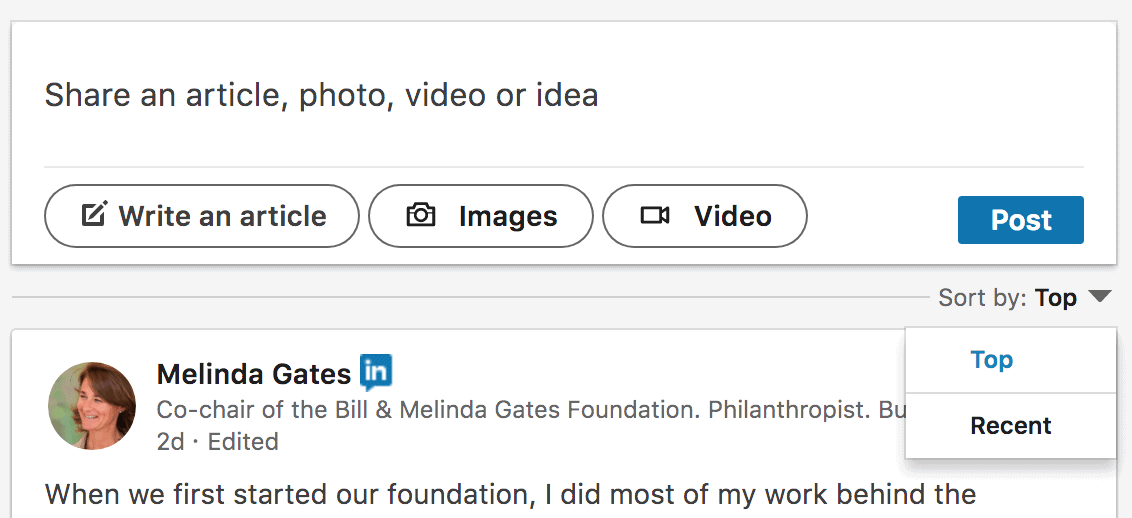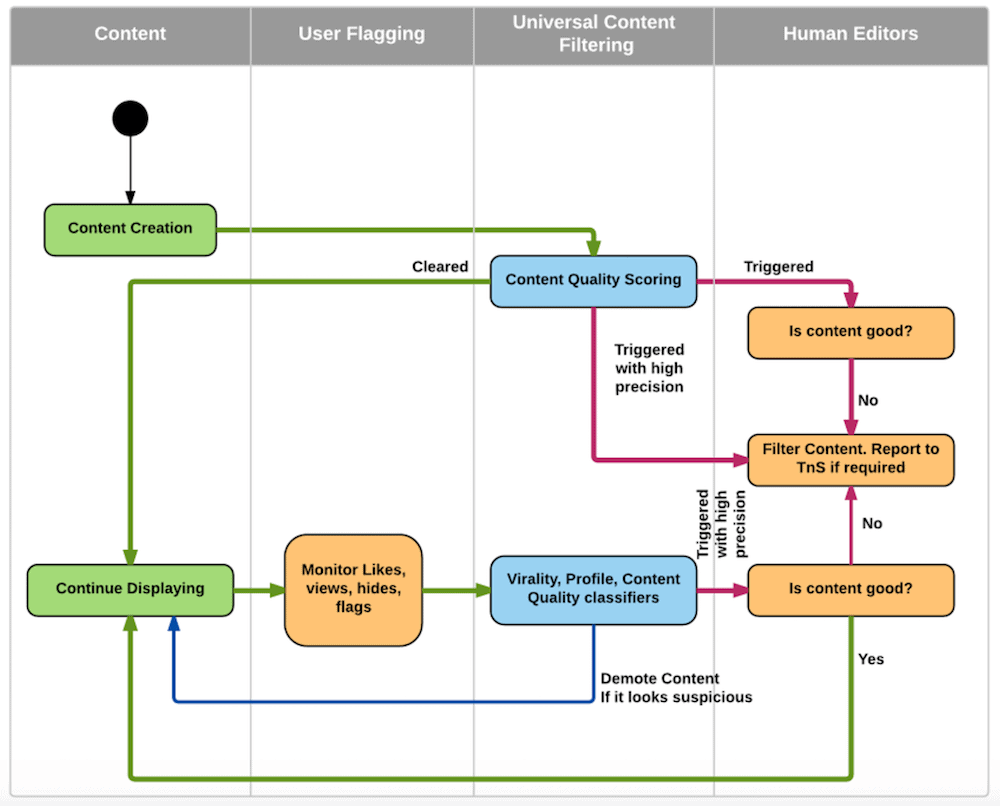How the LinkedIn Algorithm Works in 2019.
January 2019 update: In October 2018, LinkedIn changed its feed algorithm to help private users get their posts seen while slightly reducing the reach of super-popular “power users”. That’s because while total interactions on LinkedIn have increased 50% YoY, most of those interactions were with the top 1% of influencers. This latest update means that all but the largest users and brands on LinkedIn have seen their average reach and engagement improve over the past few months.
Nearly 600 million business professionals congregate on LinkedIn to find jobs, grow their networks and share content. Half of B2B buyers rely on it to make business decisions.
Whether you’re developing your personal brand or marketing on behalf of a business, LinkedIn is not a social network you can ignore. You need to develop a strategic plan for it to succeed on social in 2019.
Get started by understanding how the LinkedIn algorithm works.
Also see: The Essential LinkedIn B2B Marketing Guide for 2019 and our explanations of the most recent changes to the Facebook Algorithm and the Instagram Algorithm.
How the LinkedIn algorithm works
The main LinkedIn feed is based on an algorithm, not on recency.
The main LinkedIn feed is based on an algorithm, not on recency.
Much like its less formal counterparts Facebook and Instagram, the LinkedIn algorithm prioritizes content you’re most likely to find relevant and engage with over the most recent content.
Fortunately for everyone’s sanity, that means the way to stand out in the feed is not by posting 20 times a day.
However, it also means that just posting is not enough. In order to consistently make it into people’s feeds, you need to be regularly putting out good content that your followers reliably engage with.
Recently, LinkedIn released this helpful graphic that visually explains how their algorithm works:
In addition to what’s included in this flowchart, content is ranked and displayed based on your account’s reputation, how users have engaged with your content before, and what else is being posted.
There are also a lot more unknown factors affecting your visibility in the main feed. But let’s focus on what we do know, starting with this chart.
Filter #1
The first step in the flow is pretty simple: every time you post something, the LinkedIn feed algorithm determines whether it’s spam, low quality, or good to go. Obviously, you want to be in the “good to go” category.
The first step in the flow is pretty simple: every time you post something, the LinkedIn feed algorithm determines whether it’s spam, low quality, or good to go. Obviously, you want to be in the “good to go” category.
Filter #2
If you passed go, your content appears in the feed temporarily.
If you passed go, your content appears in the feed temporarily.
Pro tip: it is extremely worthwhile to optimize your initial post time based on your analytics or these best times to post since it will appear as long as it’s not spam.
During this stage, LinkedIn’s algorithm bots look at how your audience engages with the content.
If they’re liking it, commenting on it, or sharing it, that’s a good sign you’ll make it through to the next filter.
If people mark it as spam or hide it from their feed, LinkedIn is going to take that into account—and not in a good way.
“Report this post” and “Hide this post” are two different options, but you can’t rely on people to understand the difference.
People will hide your posts because you’re posting too much, what you’re posting is irrelevant to them, or they’ve just hit “Hide” by accident. You can’t prevent accidental reports, but you do have power over the timing and quality of your posts.

If your posts are reported or hidden by users repeatedly, they’re likely to be filtered out by the LinkedIn algorithm.

If your posts are reported or hidden by users repeatedly, they’re likely to be filtered out by the LinkedIn algorithm.
Filter #3
At this step, the LinkedIn algorithm will look beyond the content of your post to determine if it should keep showing up in users’ feeds.
At this step, the LinkedIn algorithm will look beyond the content of your post to determine if it should keep showing up in users’ feeds.
They’ll look at you and your network to determine whether or not this is a spam post and whether your network will enjoy it. This is because LinkedIn wants to avoid rewarding spam accounts and content with viral visibility.
Based on this stage, LinkedIn can remove your content from the feed or display it less often.
In either scenario, it’s up to your network to engage with your post and keep it around for another review.
Again, this is why the initial timing of your post is important for optimizing CTR and engagement.
Filter #4
Finally, humans enter the process. At this point, editors review your post to determine whether it should keep showing, whether they might include it somewhere else like a channel, or whether they can derive any takeaways from it for future algorithm tweaks and product development.
Finally, humans enter the process. At this point, editors review your post to determine whether it should keep showing, whether they might include it somewhere else like a channel, or whether they can derive any takeaways from it for future algorithm tweaks and product development.
They want to know: why, exactly, is your post performing so well?
As long as it keeps getting engagement, your post stays in the mix, continuing its algorithmic journey through the feed.
This is why sometimes you’ll see posts in your feed that are weeks (yes, weeks) old—something you definitely wouldn’t see on the fast-paced feeds of Facebook and Twitter.
How to get your posts to show up in the LinkedIn news feed

The beauty of the LinkedIn algorithm is this: as long as your post is performing well, it will keep showing up in the feed.
However, it takes a lot of work, strategic finagling, and even some luck based on what LinkedIn defines as good performance.
Follow these three tips to optimize your posts around the LinkedIn algorithm in 2019:
1. Optimize your posts
Use the same tactics you do on your blog and other social media channels, but tailor them slightly for LinkedIn.
Use the same tactics you do on your blog and other social media channels, but tailor them slightly for LinkedIn.
Your voice may have to be a bit more professional than it is on Twitter, but don’t be overly formal (it is a social network after all). Feel free to give your posts personality and a sense of humor.
Nearly 60% of LinkedIn users access the network from their phones, so prime your posts for mobile viewing. Keep your posts short, and make them compelling with interesting imagery.
Mix up your content with tips, opinions, videos, images, quotes, and links to other content. Add hashtags and work in keywords where you can, but don’t make your copy read like an SEO bot.
You want your post to show up when people search for related content, but you want them to actually click through, too.
Post at the right time. This is especially important to make it past the second filter.
People can be on the platform at all times of the day, working hours or not, so review your analytics to determine when your audience is most likely to be on LinkedIn.
2. Work their bias to your advantage

Start by creating the kind of content LinkedIn already has a bias towards, which they’re pretty clear about.
LinkedIn is a professional network. As such, in addition to your post providing generally interesting content that’s relevant to your audience and your brand, LinkedIn also recommends that your content:
- Be of particular value to someone’s career, such as tips for their professional growth
- Have industry relevance
- Be from a credible or trustworthy source (this refers to you as well as any website you link to)
Additionally, LinkedIn favors certain types of content—particularly formats they’ve made a technological investment to develop.
For instance, try to write long-form content for LinkedIn Publisher (you can always invite people to read more elsewhere or add a canonical tag to your post).
Besides the home feed, Publisher posts appear on your profile. They are also selected for inclusion on Channels and highlight emails sent to your audience.
LinkedIn introduced native video functionality last year, so use it to create and post videos instead of uploading them from elsewhere.
Local events are highly relevant and therefore favored by the LinkedIn algorithm, so spice up your videos with conference frames to stand out in the feeds of industry folks and other attendees.

Conference frames are a great way to connect with other attendees and appear at the top of their feeds.
3. Grow your network
LinkedIn wants you to post professionally inspiring or helpful content because that’s why people are on LinkedIn in the first place—to get a job, to get a better job, or to grow their professional networks.
LinkedIn wants you to post professionally inspiring or helpful content because that’s why people are on LinkedIn in the first place—to get a job, to get a better job, or to grow their professional networks.
LinkedIn reviews the relevance of your posts by looking at your audience’s careers. That is the demographic information it has to work with, so it’s a large part of what the algorithm is based on.
While you can’t control everyone who follows you, you can game the system somewhat to work in your favor by doing the following:
- Ask all your employees to follow your company and set it as their workplace on their profiles.
- Follow influential people in your industry who are prominent on LinkedIn to demonstrate your interests and industry affinity.
- Join and participate in relevant groups, sharing your content when appropriate.
- Comment on content relevant to your industry.
- Set up links to your LinkedIn page on your company website and careers page to encourage more relevant follows.
- Mention (@) people when you post something they’ll particularly like or if you’ve named them in your post.
Making LinkedIn’s algorithm work for you
Performing well with the LinkedIn algorithm in 2019 all comes down to relevance. Is content and your brand relevant to your target audience?
Performing well with the LinkedIn algorithm in 2019 all comes down to relevance. Is content and your brand relevant to your target audience?
Share content that resonates with people in your industry. Optimize the timing of your posts. Regularly review your analytics. Make real friends and connections. Engage with your industry community through posts and group comments.
Be relevant. Be engaged. Build your authority on LinkedIn.
Michael Quoc is the CEO and founder of ZipfWorks, an e-commerce lab with forward-thinking web products. He’s currently at work on Dealspotr, creating the most comprehensive and accurate promo code database on the web—all through the power of crowdsourcing and AI. Previously, Michael was the Director of New Products at Yahoo. Follow him on Twitter at @michaelquoc.





Aucun commentaire